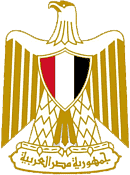Background Highlighting afordable alternative crops that are rich in bioactive phytoconstituents is essential
for advancing nutrition and ensuring food security. Amaranthus blitum L. (AB) stands out as one such crop with a traditional history of being used to treat intestinal disorders, roundworm infections, and hemorrhage. This study aimed to evaluate the anthelmintic and hematologic activities across various extracts of AB and investigate the phytoconstituents responsible for these activities.
Methods In vitro anthelmintic activity against Trichinella spiralis was evaluated in terms of larval viability reduction. The anti-platelet activities were assessed based on the inhibitory efect against induced platelet aggregation. Further, efects on the extrinsic pathway, the intrinsic pathway, and the ultimate common stage of blood coagulation, were monitored through measuring blood coagulation parameters: prothrombin time (PT), activated partial thromboplastin time (aPTT), and thrombin time (TT), respectively. The structures of isolated compounds were elucidated by spectroscopic analysis.
Results Interestingly, a previously undescribed compound (19), N-(cis-p-coumaroyl)-ʟ-tryptophan, was iso‑
lated and identifed along with 21 known compounds. Signifcant in vitro larvicidal activities were demonstrated
by the investigated AB extracts at 1mg/mL. Among tested compounds, compound 18 (rutin) displayed the high‑
est larvicidal activity. Moreover, compounds 19 and 20 (N-(trans-p-coumaroyl)-ʟ-tryptophan) induced complete
larval death within 48h. The crude extract exhibited the minimal platelet aggregation of 43.42±11.69%, compared
with 76.22±14.34% in the control plasma. Additionally, the crude extract and two compounds 19 and 20 signifcantly inhibited the extrinsic coagulation pathway.
Conclusions These fndings extend awareness about the nutritional value of AB as a food, with thrombosis-preventing capabilities and introducing a promising source for new anthelmintic and anticoagulant agents
تاريخ البحث
قسم البحث
مجلة البحث
BMC Complementary Medicine and Therapies
الناشر
Springer Nature
تصنيف البحث
Q2
عدد البحث
24
موقع البحث
https://link.springer.com/content/pdf/10.1186/s12906-024-04478-2.pdf
سنة البحث
2024
المشارك في البحث
صفحات البحث
183
ملخص البحث



